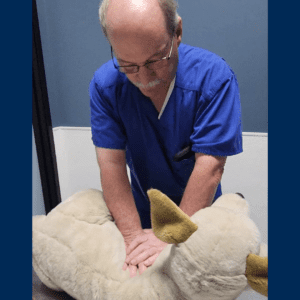CPR, or cardiopulmonary resuscitation, is something many are familiar with. But are you aware of how to perform CPR on your pet in the event of an emergency?
Here we summarize the expert advice of Dr. Dave Henderson, the Medical Director at Heaven Can Wait Animal Society. To gain the most in-depth knowledge and visual guidance, be sure to check out the complete video below. In this video, Dr. Henderson personally explains each step of pet CPR. Equipped with the right knowledge, you can be prepared to administer life-saving techniques during an emergency.
Understanding the Essentials
Traditionally referred to as the ABCs (Airway, Breathing, Circulation), the approach to pet CPR has evolved into CABs (Circulation, Airway, Breathing). The primary focus is to ensure proper blood flow, as it is the key to a successful resuscitation.

Assessing Your Pet's Condition
The first thing to do is determine if your dog or cat is breathing. Watch for chest movements and feel for a heartbeat. If there's no breathing, it's time to take action. You can also check your pet's eyes. If they're still blinking, there's a good chance their brain is functioning. However, dilated and fixed pupils could indicate a cardiopulmonary arrest.

Performing Compressions
When in doubt, it's better to act fast. Begin compressions immediately, even if you're unsure if your pet is in cardiac arrest. Remember, you won't hurt your pet if they're already gone. Focus on compressions to promote blood flow, as this is crucial for resuscitation. By compressing the chest, you may even generate gasping and airway movement.
For proper compressions, lock your hands together, straighten your elbows, and position your hands at the highest point of the ribcage. Bend at the waist and push down firmly. Aim for a rate of 100 to 120 compressions per minute, which you can achieve by remembering the beat of the song "Staying Alive" (doo doo doo doo). This may tire you quickly, so having two or three people taking turns is beneficial.
In some cases, like with brachycephalic dogs or barrel-chested dogs (pugs, bulldogs, boxers), you can compress the chest while they lie on their back. In smaller pets like toy dogs or cats, compressions can be done right behind the elbow using your thumb and four fingers.

Adding Mouth-to-Snout Respiration
To aid in resuscitation, you can have an assistant perform mouth-to-snout respiration every 30 compressions. Cover your pet's mouth and blow into their nose. While doing this, don't stop compressions, not even for a minute.

Monitoring Progress
After performing 50 to 60 compressions, check for the presence of a heartbeat. If you've been doing CPR for 2 to 3 minutes without any effect, the chances of success decrease significantly. It's crucial to keep doing compressions, even during transport, and never stop for anything.

Get to Your Nearest Veterinarian
In a hospital setting, veterinarians have access to additional resources like pure oxygen, intubation, and cardiac resuscitation drugs. However, success still depends on factors such as how long the pet has been down and the cause of the cardiac arrest. Even in non-clinical settings, it's worth trying CPR, even if the chances aren't great.
You've learned the essential steps of pet CPR! By assessing your pet's condition, starting proper compressions immediately, and doing mouth-to-snout respiration, you may be able to make a difference during a cardiac emergency. Remember, every second counts and it’s essential to get to your nearest veterinarian as soon as possible.